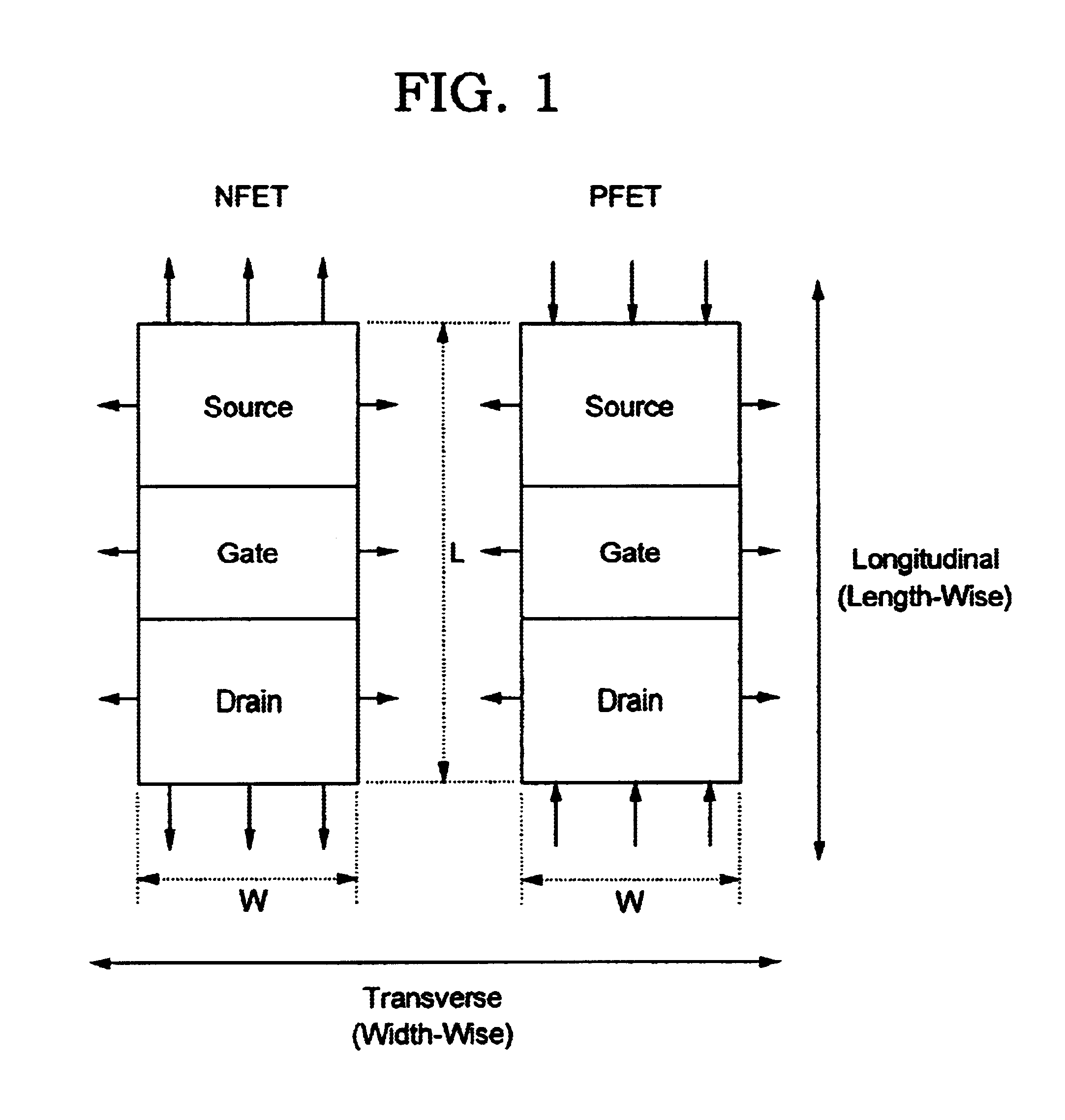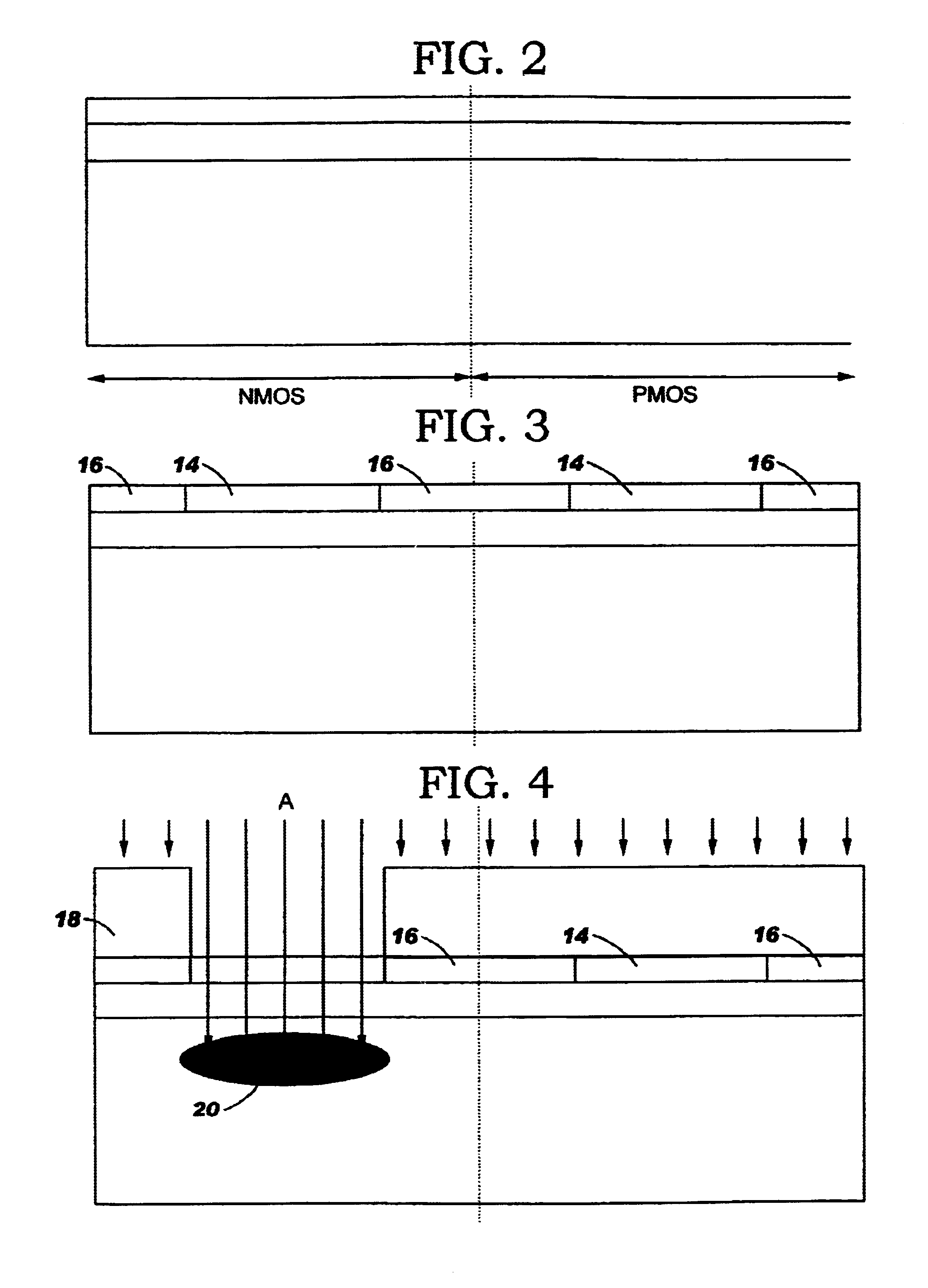MOSFET performance improvement using deformation in SOI structure
a technology of soi structure and mosfet, which is applied in the direction of semiconductor devices, basic electric elements, electrical equipment, etc., can solve the problems of increasing manufacturing costs and degrading the performance of p-type devices
- Summary
- Abstract
- Description
- Claims
- Application Information
AI Technical Summary
Benefits of technology
Problems solved by technology
Method used
Image
Examples
Embodiment Construction
[0013]The invention introduces a method for increasing device performances for both an N type device and a P type device, which is easily integrated into conventional processing steps without significantly increasing manufacturing costs. This is achieved by selectively introducing tensile and compressive strains in portions of a semiconductor substrate or layer on which an N type device and a P type device are formed. In general, the tensile strain is introduced by expanding a portion of the substrate or layer for the N type device, and the compressive strain is introduced by compressing a portion of the substrate or layer for the P type device.
[0014]FIG. 1 illustrates desired stress types for improving the performance of an N type device (e.g., NFET) and a P type device (e.g., PFET). Each of the NFET and PFET has a source region, a gate region and a drain region, as shown therein. The arrows extending outwardly from the active area illustrate tensile stress, and the arrows extendin...
PUM
 Login to View More
Login to View More Abstract
Description
Claims
Application Information
 Login to View More
Login to View More - R&D
- Intellectual Property
- Life Sciences
- Materials
- Tech Scout
- Unparalleled Data Quality
- Higher Quality Content
- 60% Fewer Hallucinations
Browse by: Latest US Patents, China's latest patents, Technical Efficacy Thesaurus, Application Domain, Technology Topic, Popular Technical Reports.
© 2025 PatSnap. All rights reserved.Legal|Privacy policy|Modern Slavery Act Transparency Statement|Sitemap|About US| Contact US: help@patsnap.com



